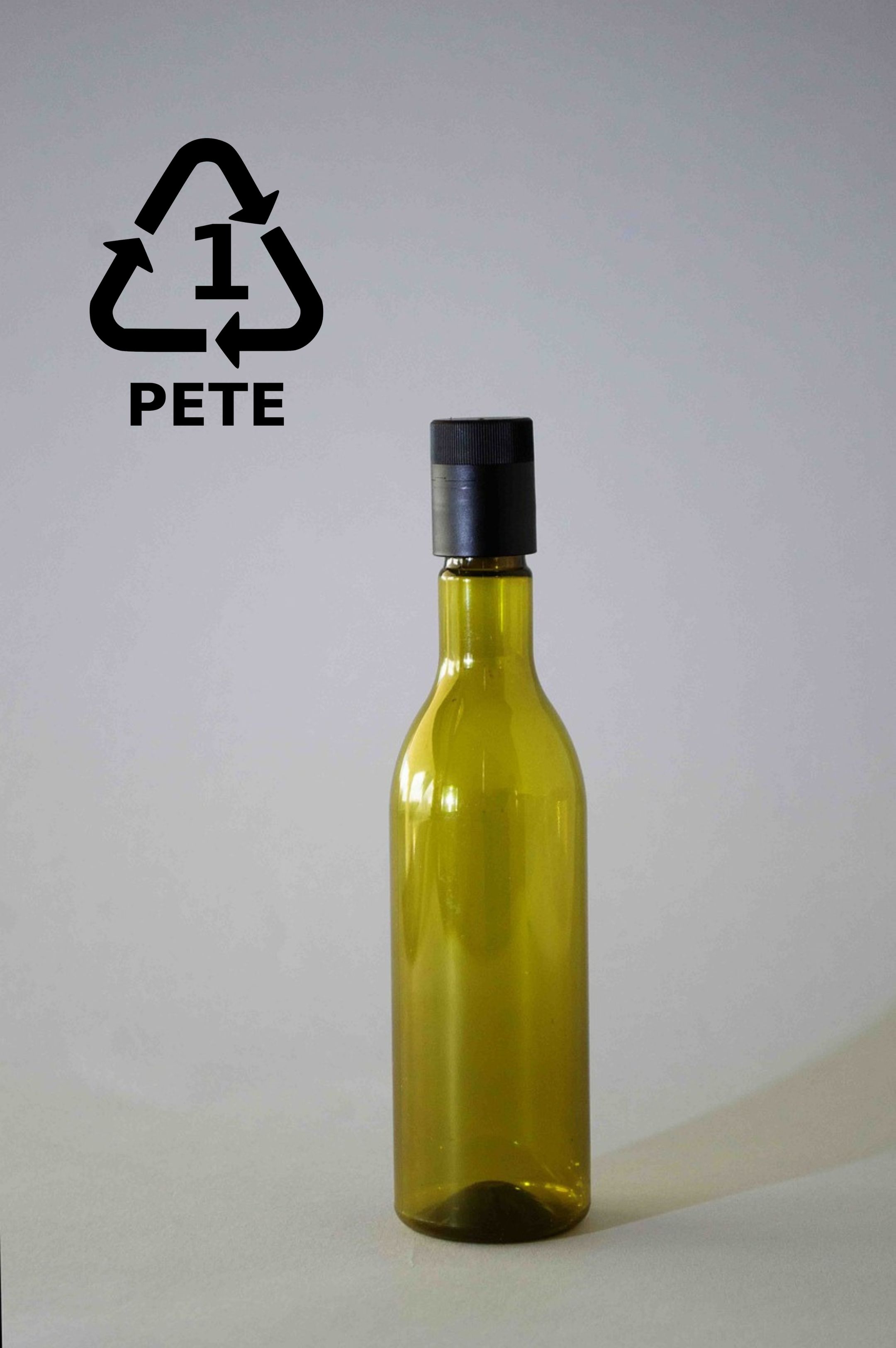
PET - The Sustainable Solution for Wine Packaging
Global Data projects a 6.7% growth rate for PET wine bottles between 2022 and 2027. Let's explore the significant advantages of PET in wine packaging.
1. Transparency and Design Versatility of PET
“Whatever the product, the customers see it first before they buy it. The physical performance comes later, the visual always comes first”, highlighted by experts in product design. From the perspective of packaging design, PET, as a primary material for wine packaging, boasts high transparency comparable to glass, effectively showcasing the wine's color and appearance.
Moreover, PET's versatility in shaping allows designers to create unique and appealing packaging designs. This material's diversity and flexibility not only enhance the product's visual appeal but also help brands stand out in the market.
2. Safety: PET's Resilience Advantage
PET material offers advantages beyond sustainability and closed-loop material recycling. Its ability to resist bursting is another highlight, maintaining integrity under impact or pressure, thereby reducing the risk of shattering. In contrast, glass bottles are prone to break upon impact, producing sharp shards that pose safety risks. Many major events and air travel restrict the use of glass bottles due to safety concerns, opting instead for PET bottles as the preferred safe packaging choice.
3. Research Confirms: Environmental Benefits of PET Wine Packaging
A paper published in the Cleaner Engineering and Technology journal used a Hungarian winery as a case study to compare the environmental impacts of PET bottles and glass bottles during production and transportation. From this study, several advantages of PET packaging can be highlighted:
- Lightweight Packaging Advantage: PET materials excel in lightweight packaging. Typically, a 750 ml glass bottle weighs at least 500 grams, whereas PET reduces the weight of the bottle by 90%. This reduction not only lowers transportation costs but also decreases carbon emissions during transit.
- Low Energy Consumption and Greenhouse Gas Emissions: The manufacturing process of PET bottles consumes less energy, especially in terms of greenhouse gas emissions. Research indicates that Burgundy glass bottles emit 0.391 kgCO₂e during production, while Bordeaux glass bottles emit 0.323 kgCO₂e. In contrast, Bordeaux PET bottles emit only 0.120 kgCO₂e, nearly one-third of the emissions from glass bottles.
- Cost and Transport Efficiency: PET bottles have lower production costs. For instance, the price of 2 million Burgundy glass bottles is €1,640,000 higher than Bordeaux PET bottles. In terms of logistics efficiency, PET bottles offer clear advantages. Each 5-LH diesel truck can transport more PET bottles, with each truck carrying 12,000 more Bordeaux PET bottles compared to Burgundy glass bottles, and 9,000 more bottles compared to Bordeaux glass bottles. This efficient transport method further reduces energy consumption and carbon emissions.
4. Enhancing Sustainability through Recyclability
PET material has become the preferred choice for sustainable packaging due to its recyclability and high circular value. PET seamlessly integrates into existing recycling systems. Mario Casper, specializing in PET container design, emphasizes using the same material for all bottle components to simplify recycling processes further. This approach has been effectively implemented. Previously, a US-based company launched a PET cap and closure system, enabling high-throughput production of monomaterial bottles, promoting recycling and streamlining packaging lifecycle management.

5. Strong Consumer Preference for Sustainable Wine Packaging
Consumer attitudes towards sustainable packaging are evolving, with sustainability becoming a significant factor influencing their purchasing decisions.
A preliminary survey of 1,000 wine consumers in the Campania region of Italy revealed that while approximately 91% of respondents prefer wine packaged in glass bottles, about 62% would reconsider their choice upon learning that the quality of most wines does not change with alternative packaging, and that using alternative packaging can save costs.
6. Addressing PET's Challenges in Wine Packaging
Preserving the freshness of wine is crucial, and currently, PET bottles lag behind glass bottles in this aspect due to oxidation concerns.
However, PET's potential in wine packaging can be maximized through improvements and design innovations. Advanced technologies like nanolayer deposition and oxygen barrier films have been developed to enhance PET bottles' oxygen barrier properties. These innovations significantly reduce oxygen permeation, thereby extending the shelf life of wines.
7. Conclusion
Overall, PET bottles offer a promising and sustainable alternative to glass in wine packaging, providing significant benefits in terms of environmental impact, safety, and design versatility. With continued advancements in technology, PET has the potential to overcome its current limitations, further enhancing its role in the wine industry’s sustainability efforts.
